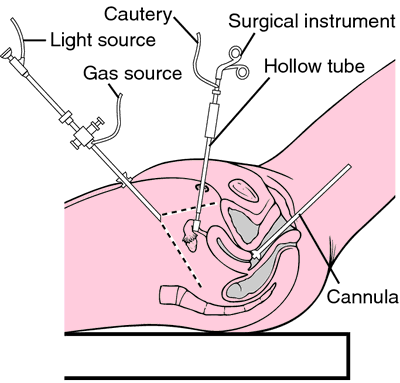The endometrium is the tissue that lines the inside of a woman’s uterus, or womb. When endometrial cells are found outside the uterus, the condition is known as endometriosis.
Endometrial tissue should only exist inside the uterus. But sometimes cells travel out of the uterus to other parts of the body through the blood stream, or cells in other parts of the body change into endometrial cells. Endometriosis most often occurs in the pelvis. But wherever they are located, endometrial cells respond to monthly hormone changes by bleeding. In the uterus, this blood becomes the monthly period or menstrual flow. Outside the uterus, the blood can irritate other tissues and cause scarring. Patches of endometrial tissue outside the uterus are called implants.
Symptoms of endometriosis
The primary symptom of endometriosis is pain, usually in the lower abdomen and pelvis. This pain is usually worst before and during the menstrual period. Endometrial implants may attach to any tissue in the pelvis, including the outside of the bladder, intestines, or ovaries. Implants may also invade an ovary and create a blood-filled pocket called an endometrioma. When these implants bleed, they can cause scarring on surrounding tissue which may take the form of bands of scar tissue that stretch between structures. These bands, called adhesions, can stretch between abdominal structures, such as from the bladder to the uterus, from an ovary to the wall of the abdomen, causing more pain.
Treating endometriosis
Treatments for endometriosis vary depending on a woman’s symptoms, amount of pain, plans for future pregnancy, and age.
• Pain relievers – Non-steroidal anti-inflammatory drugs (NSAIDs) can be used to relieve pain and may be the only treatment needed if symptoms are mild and no future pregnancies are planned.
• Drugs – Hormones such as oral contraceptives can be used to limit the activity of the ovaries which can slow the growth of endometrial tissue. In some cases, drugs are used to simulate pregnancy which can help prevent endometriosis from getting worse. In other cases, drugs may be used to simulate menopause to stop periods from happening.
• Surgery – The goal of surgery is to remove all endometrial tissue from the abdomen and remove or destroy all adhesions of scar tissue. This is typically done as a laparoscopy which means the surgeon uses a tiny video camera and small surgical instruments that are inserted into the abdomen through several small incisions. This is a minimally invasive procedure that shortens recovery time. In some cases, a laparotomy may be needed, which is surgery requiring a large incision in the abdomen.
There are two basic techniques that can be used to treat endometrial implants:
• Excision – implants are cut away from surrounding tissue using scissors, a precise heat gun, or a laser.
• Coagulation – Implants are destroyed when they are burned by a fine heat gun or vaporized with a laser beam. Extra care must be taken to make sure only the implant is destroyed and the surrounding tissue is not damaged.
A number of different procedures can be accomplished through laparoscopic surgery:
• Remove or destroy endometrial implant tissue, either by excision or coagulation
• Remove or destroy endometriomas (pockets of blood on the ovaries)
• Remove adhesions of scar tissue
• Remove the uterus (hysterectomy)
• Remove one or both ovaries - both ovaries are removed only if necessary and if the woman does not want to have children in the future
• Surgery to remove or repair parts of the bowel or bladder
If left untreated, endometriosis can cause pain and infertility. See your doctor if you have unusual pain associated with your periods.
Sources:
Merck Manuals Online Medical Library
Endometriosis.org
National Institutes of Health: Medline Plus
American Congress of Obstetricians and Gynecologists




Add a CommentComments
There are no comments yet. Be the first one and get the conversation started!